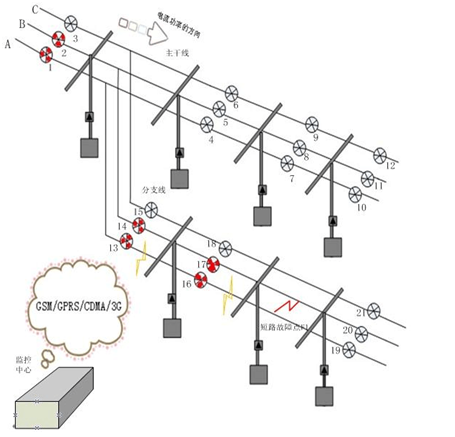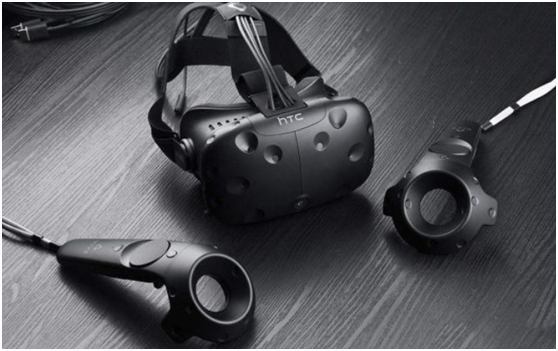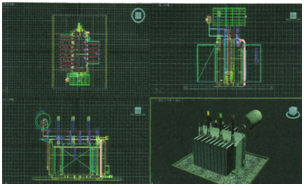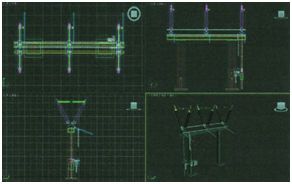Application of virtual reality technology in power grid fault monitoring - Can Wang
2020-12-21
I. Background introduction
The scale and technological level of modern power grid system are constantly improving. The power grid, also known as the power grid, is an integral part of all voltage substations and transmission and distribution lines in the power system. The State Grid has formed a complete and stable structure of a huge long-distance transmission network. The state grid corporation of China has become the world's highest voltage level, the largest system scale, the most powerful resource allocation capacity of ac-DC hybrid grid, the function, form and structure of the grid is undergoing profound changes. Power system is one of the most complex artificial systems, its geographical location are widely distributed, generating electricity energy balance and transport in large Numbers, the speed of light in power transmission can reach, highly reliable communication scheduling, real-time operation never stops, the significant failure moment expand etc, these characteristics determine the power system operation data generated in large Numbers, rapid growth, type is rich. While the scale of power network is expanding year by year, the security, stability and reliability of power network are required more and more. Figure 1 shows a working diagram of a fault indicator for the grid system. Whether it is power network planning and design, or fault detection of power network nodes, power network analysts need to grasp and analyze the overall operation of power system through digital simulation technology.
With the development of smart power grid and regional interconnection of the national power system, various new energy sources and new equipment are constantly added, the scale of the existing power grid is constantly expanding, and the power system is increasingly complex, which makes it more difficult to monitor, analyze and control the power grid. However, the result data obtained by power system simulation can only be understood by the staff through reasonable visualization means and corresponding analysis methods. Visual analysis of power simulation data plays a key role in maintaining the stable operation of power grid system as a means for analysts to indirectly understand the operation status of power grid. In the process of power system operation, there will be certain data distribution characteristics, and there may be local fluctuations and other abnormal situations. By capturing these characteristics and abnormal conditions, analysts will understand the operation status of the power grid and propose targeted solutions and countermeasures.

Figure 1: Fault detection diagram of distribution network
The characteristics of virtual reality technology
Virtual reality technology is a comprehensive technology, its main technical connotation includes computer graphics, multimedia technology, human-computer interaction technology and simulation technology. With the maturity of computer hardware and software, virtual reality technology has seen explosive development in recent years, and has been widely used in medical, educational, entertainment, industrial, military and other fields. Virtual reality technology enables users to interact and influence with objects in the virtual environment in a natural way by establishing artificial three-dimensional virtual environment, which greatly expands human's ability to understand the world, simulate and adapt to the world. Virtual reality technology has three characteristics: immersion, interactivity and conception. In the computer-generated virtual scene, users can communicate and interact with each other through gestures, language and other natural interactive ways, and get multi-channel information feedback such as vision, hearing and touch, so as to feel the immersion and fidelity similar to the real world. In the past five years, a large number of virtual reality hardware devices, mainly virtual reality headsets, have emerged. For high-dimensional data, especially three-dimensional spatial data, virtual reality technology has unique and huge advantages:
itself is 3 d virtual reality environment, users in the virtual reality environment observation space data, theory and there is no difference observed in the real world objects. Therefore, virtual reality environment can bring users a great sense of immersion;
virtual reality system can detect the user's head and hands motion to obtain mutual information. On the one hand, it increases the sense of immersion; on the other hand, it also provides more human-computer interaction channels:
in the virtual reality system, users can use a virtual hand and ray to pick up and manipulation of three-dimensional objects. The HTC Vive VR is shown in Figure 2. It has a good track record in VR with excellent configuration and compatibility, and even the Steam VR Powered logo supports VR games on Steam. This is much more natural and intuitive than using a mouse and keyboard. The related work in many literatures has proved that virtual reality technology has obvious advantages in spatial data and data visualization.

Figure 2: HTC Vive VR virtual reality devices and control remote sensing
The application of virtual reality technology in power system
The development of power system regulation and control has put forward new demands for substation comprehensive monitoring, and the comprehensive display of substation monitoring information is becoming more and more important. At present, Supervisory Center's monitoring information on substation mainly comes from two channels: one is electrical volume And equipment status information collected through SCADA(Supervisory Control And Data Acquisition) system; the other is to view real-time on-site images through video monitoring equipment. These two aspects of information cannot be directly integrated into the same screen. Nowadays, with more and more unattended substations, it is difficult for monitoring personnel to get into substations to understand the real scene, and they have no clear understanding of the actual scene of substations. At the same time, as the monitoring personnel are often responsible for the monitoring work of more than ten to dozens of stations, the actual situation of each substation is often not understood, and the modeling demand of substation is very large.
In the field of substation simulation, three-dimensional modeling has been applied to carry out detailed modeling of the primary and secondary equipment of the substation, and can provide three-dimensional roaming interactive environment for the inspection and operation of the actual equipment. However, this method is not suitable for monitoring a large number of actual substation scenes due to its long modeling cycle and poor model reuse, so it cannot provide convenient monitoring for integrated control applications. Panoramic modeling can provide a simple and feasible 3D panoramic display environment by taking panoramic pictures with simple equipment. With the help of corresponding computer technology, all-round interactive display can be realized. The scene modeling technology based on panoramic images and information visualization, electrical equipment in a simple 3 d environment, implementation scenario images demonstrate exactly, superimposed on the 3 d visualization display content, real-time display of primary and secondary equipment electrical state can provide monitoring personnel in the same picture with panoramic substation monitoring platform, can greatly enhance the integration of substation monitoring information. Gear VR, Steam VR, HoloLens, etc. These virtual reality headsets are cheaper and easier to use than traditional large projection screens, and can run smoothly on mid-to-high end PCS and even a variety of mobile devices. At present, these vr headsets are mainly used in games and entertainment. Virtual reality headsets completely cut off users from the external environment. Compared with the traditional surround projection screen, virtual reality headsets have better immersion and authenticity. Through the application of virtual reality technology, it can provide a very intuitive reference for the design, planning, project decision-making, optimization and analysis of power engineering and power equipment, and can provide a very useful technical means for improving the technical scheme of the system and equipment.
In most cases of the combination of virtual reality technology and power grid system, it only involves 3D modeling, scene tour, virtual training and other contents, but rarely goes deep into the field of visual data analysis. Therefore, immersive virtual reality technology is introduced into the field of data visual analysis of power grid system, and several humanized interactive schemes are proposed to enable power grid analysts to observe and analyze power grid data in a more natural interactive way. Figure 4 and 5 are virtual reality modeling diagrams for transformers and brake devices of power system.


Figure 4: Transformer model Figure 5: Knife brake model figure
After a long time of development, virtual reality technology has gradually penetrated into all aspects of the power system, and has been widely used in power engineering design, simulation training, power monitoring and other links. Traditional power system design is mainly based on two-dimensional diagram, which is prone to inconsistency or insufficient consideration in the process of design and calculation and verification, and the design efficiency and economic efficiency are low. Using virtual reality technology to design power system can make the design process of 3D power unit model more intuitive and reasonable.
